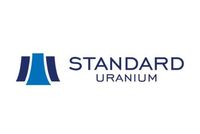Uranium Stockpiling: The Rise of Nationalism or an Energy Security Effort?
A domestic reserve would be especially important for America, a nation that uses nuclear reactors to generate 20 percent of its electricity and 55 percent of all clean energy, yet imports 90 percent of that uranium from around the world.

Since 2019, energy security has become one of the most pressing issues facing countries around the globe, with COVID-19 showcasing how fragile interconnected supply chains can be amid a global health crisis.
This was evidenced again when Russia invaded Ukraine, putting Europe's oil and gas supply in limbo.
While these recent issues have brought discussions around energy security to the forefront, questions about long-term, sustainable energy supply have been growing for a long time. In 2020, then-US President Donald Trump proposed the building of a strategic uranium stockpile that would be supplied by domestically mined uranium.
Much like the country's Strategic Petroleum Reserve, which boasts 4.7 million barrels of stored capacity at four sites, the uranium reserve was to hold a stockpile of U3O8. The idea was to ensure the uninterpreted supply of electricity from nuclear reactors, as well as the fulfillment of military needs.
A domestic uranium reserve would be especially important for the US, which uses nuclear reactors to generate 20 percent of its electricity and 55 percent of all clean energy, yet imports 90 percent of its uranium.
Production of uranium has been on the decline in the US since the 1990s and was further lowered in 2011 post-Fukushima, when the market was flooded with excess supply that drove prices lower. Subsequently, the market value of U3O8 fell to a 12 year low of US$17.16 per pound by November 2016.
At those lows, uranium mining and exploration is uneconomical, and most US-based production was curtailed.
Although Trump was unable to secure the presidency in 2020, the concept and need for a strategic uranium stockpile has remained and gained support. In late 2020, Congress approved the Consolidated Appropriations Act, which earmarks US$75 million for the Department of Energy's (DOE) Uranium Reserve Program.
The cash infusion prompted the DOE to make an open request for information on how the stockpile should be built and how the uranium should be procured.
Uranium stockpiles inside and outside the US
As the US works to build a strategic uranium reserve and the importance of clean, green energy becomes more prevalent, will other nations look to build their own stockpiles?
"Other countries and global utilities are likely evaluating strategic inventories,” Nima Ashkeboussi, senior director of fuel and radiation safety at the Nuclear Energy Institute, told the Investing News Network (INN).
“The invasion of Ukraine has highlighted the need for the US government to accelerate the procurement of fuel for the Uranium Reserve Program, the need to invest in expanding other domestic fuel production capabilities and increase existing government nuclear fuel inventories.”
Of course, as Ana Bryndza, executive vice president at UxC, pointed out, there are already stores of energy fuel throughout the world. “Many countries already have some type of strategic stockpiles of uranium,” she said to INN. “Notably, China is believed to hold a sizable stockpile, for example.”
Bryndza also noted that the US has a small contingency already.
“In the US, there is an American Assured Fuel Supply, which is a fuel bank aimed at covering supply disruptions for the US utilities,” she added. “The US government is preparing to carry out this year the initial procurement for the Uranium Reserve Program in the appropriated amount of US$75 million.”
What would set the newly proposed stockpile apart is where material is set to be sourced — the new uranium reserve will be supplied only by US uranium, not imported from nations like Canada, Australia, Kazakhstan and some African countries. Given that the US produced less than 220,000 pounds in 2020, it will have to step up.
“The US domestic uranium and conversion industry is actively promoting the idea of ensuring the Uranium Reserve is funded over the next decade to support domestic uranium production,” she said. “In the end, there is no doubt that security of supply for nuclear fuel will become a key factor for many countries.”
What about conversion and enrichment capacity?
Security of supply has been a topic in the uranium the market for many years, and has again come to light now that trade with Russia has ceased. Despite being seventh in terms of annual uranium production, Russia is the leader in conversion, contributing one-third of 2020’s total converted supply.
Additionally, Russia accounts for 43 percent of global enrichment capacity, making any potential uranium embargoes or sanctions against Russia challenging for the energy fuel sector.
"This is certainly the key question of the day,” UxC’s Bryndza said, going on to point out that nuclear fuel markets are global in nature, vary notably by region and are highly interrelated.
“The question is not just that of uranium, but of enrichment and conversion,” she explained to INN. “The latter two are certainly a bigger pinch point than uranium itself. Bringing replacement capacities online takes time and money, and will require longer-term support and commitments. In the end, a transition away from a major supplier takes time to ensure all nuclear power plants have fuel.”
While challenging, as Ashkeboussi explained, there is already an effort underway to shore up supply of converted and enriched uranium. “The unprovoked Russian invasion of Ukraine has utilities exploring other sources of conversion and enrichment supply,” he said. “While alternate suppliers of conversion and enrichment services are limited, if imports are disrupted, US utilities would not immediately be impacted.”
The delay of impact would largely stem from utilities storing anywhere from 18 to 24 months worth of supply on hand. However, without a viable source, issues could arise down the road.
“An immediate ban without significant government support could create longer-term challenges for the industry,” Ashkeboussi added.
Don’t forget to follow us @INN_Resource for real-time updates!
Securities Disclosure: I, Georgia Williams, hold no direct investment interest in any company mentioned in this article.
Editorial Disclosure: The Investing News Network does not guarantee the accuracy or thoroughness of the information reported in the interviews it conducts. The opinions expressed in these interviews do not reflect the opinions of the Investing News Network and do not constitute investment advice. All readers are encouraged to perform their own due diligence.
- Uranium Outlook 2022: Prices Have Broken Out, How High Will ... ›
- How to Invest in Uranium | INN ›
- U3O8 Price Update: Q1 2022 in Review | INN ›
- 5 Movies About Energy You Need to Watch | INN ›
- Uranium Outlook 2022: Prices Have Broken Out, How High Will They Go? ›
- U3O8 Price Update: Q1 2022 in Review ›
- U3O8 Price Update: Q1 2022 in Review ›
- U3O8 Price Update: Q2 2022 in Review ›






